Our Mushroom Monday posts have been scant for the last year, and with good reason. In the midst of a drought, with no rain forecast through at least the end of the first week of January, 2013 has now been officially ruled as the driest year on record in the San Francisco, and Monterey Bay, areas.
However, considering how bone dry the farm is at the moment, you can imagine my surprise on Christmas Eve when I bumped into a rather robust cluster of oyster mushrooms (Pleurotus ostreatus), growing on a fallen decaying tanoak (Lithocarpus densiflorus) trunk.
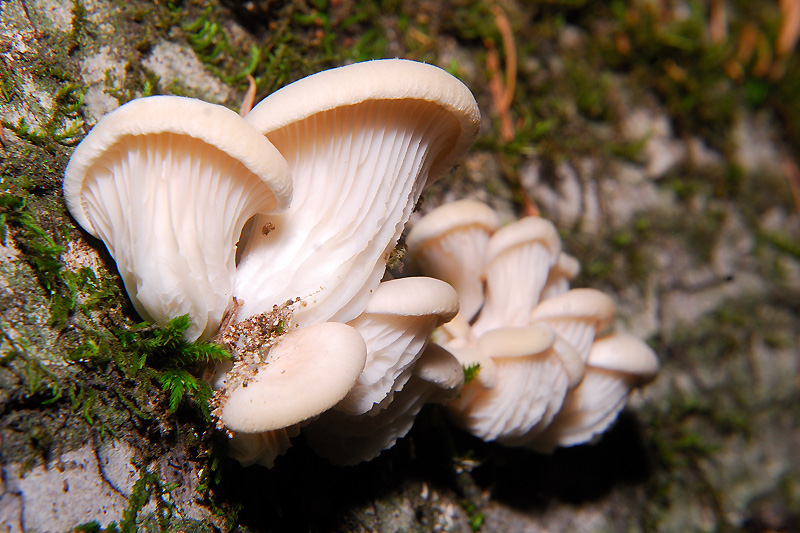

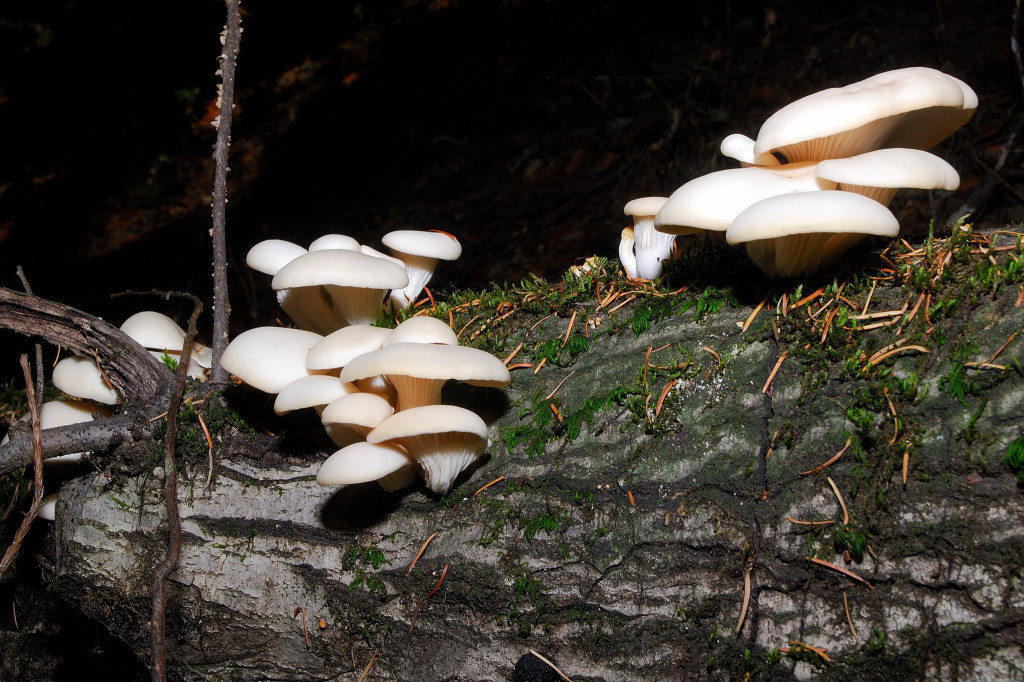
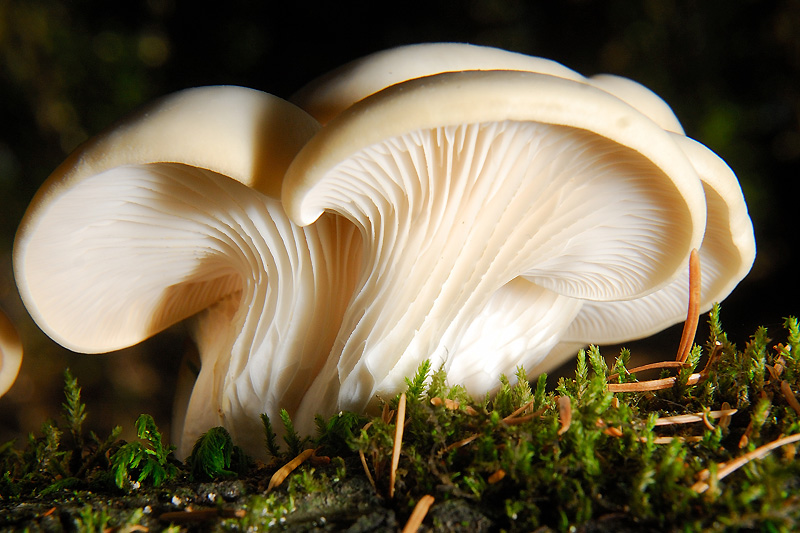
These are growing a mere 20 feet behind the chicken coop! Aren’t they gorgeous?
I’ve been looking for oyster mushrooms on the property since we first moved here. Instead I’ve found a variety of other culinary favorites, including chanterelles (Cantharellus californicus), black trumpets (Craterellus cornucopioides), and even a black morel that popped up in the goat yard after we built the barn. However, up until now, the relatively common oyster mushroom had evaded me.
Knowing that here on this property I would be most likely to find oyster mushrooms growing in association with oak, I’ve frequently scoured our oak trees, and downed logs, for any sign of them.
As if to taunt me, last January I did find some beautiful Mock Oyster Mushrooms (Phyllotopsis nidulans).
They are similar in overall structure, albeit their color, and texture, is distinctly different. Close, but not close enough. So considering our paucity of recent rain, I was especially thrilled to finally find this cluster. In fact, I walked that entire hillside this morning, and these were the only specimens I found.
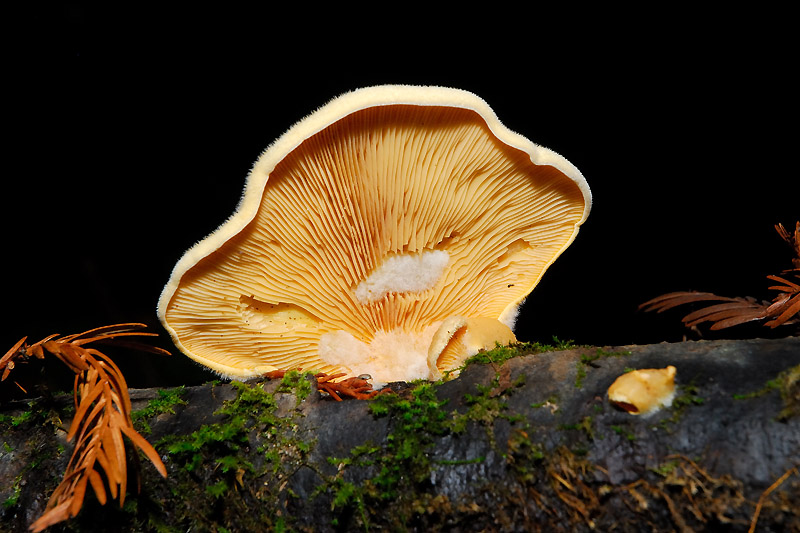
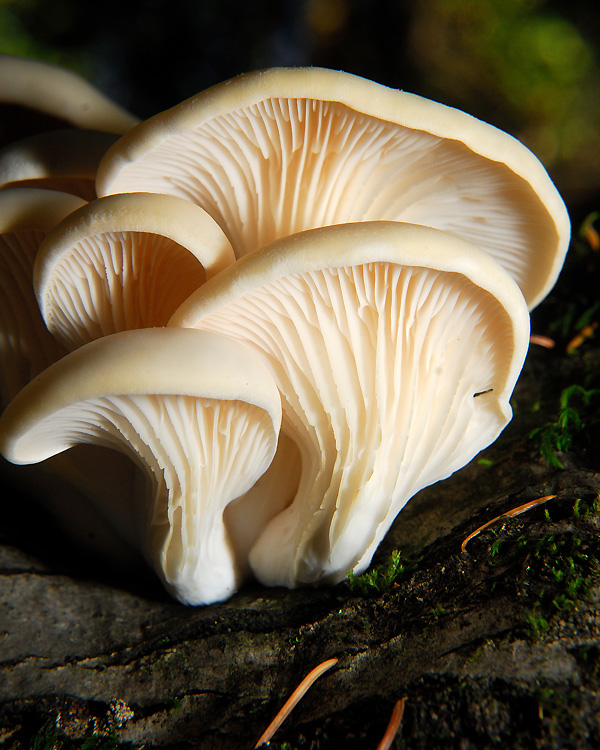
Although both the mock, and true oyster mushrooms are agarics (gilled mushrooms), and both were once in the genus Pleurotus, they are now classified not only in different genera, but also in entirely different families. These true oyster mushrooms are in the Pleurotaceae family, whereas the Mock Oyster is now in the Tricholomataceae family.
Phylogenetics aside, perhaps the most important distinction between the two is that where the true oyster mushroom is edible, and sought after by both professional, and home chefs alike, the mock oyster mushroom is severely lacking in any culinary appeal.
There is little likelihood of confusion in identifying them though. The caps of Pleurotus ostreatus are smooth, whereas Mock oysters are comparatively fuzzy. The caps of Pleurotus ostreatus are distinctly convex, typically ranging between 4-15 cm at maturity, and may become more plane, or centrally depressed with age.
The cap margin is curved under when young, and becomes more wavy with maturity.
This species is often considered by many to lack a stem, but the caps are often anchored by rudimentary eccentric, or lateral, stems to their substrate, and the stipe may be more apparent in some specimens than others. I noted some with more distinct stems that were growing from underneath an elevated section of the log, and growing upward at an angle.
The gills are decurrent, and extend down the stem, and the spore print of this species is typically white to grey. Note that Mock oyster mushrooms have a pink spore print.

There are apparently three known species of Pleurotus, distributed throughout much of North America, that were once all considered to be of the same species, and are quite similar in appearance to each other. Pleurotus ostreatus, is more commonly found in the colder late fall and winter months. These must be particularly hardy considering the recent cold snap we had here. The less cold-tolerant Pleurotus pulmonarius species is usually found late summer to early fall. These two species can be difficult to tell apart morphologically, however, as both are similar in general appearance.




A third species, Pleurotus populinus, is also similar in appearance, but is only found growing on Populus species wood including Cottonwood and Aspen.
Although nature gifted me with my first oyster mushroom sighting on the farm, just in time for Christmas, and I can finally cross oyster mushrooms off my list of fungi to find here, I still have a few other species I’d like to find. However, unless we finally get some significant rainfall in the next several weeks, this might be the first, and last, Mushroom Monday post of the season! Cross your fingers for rain!

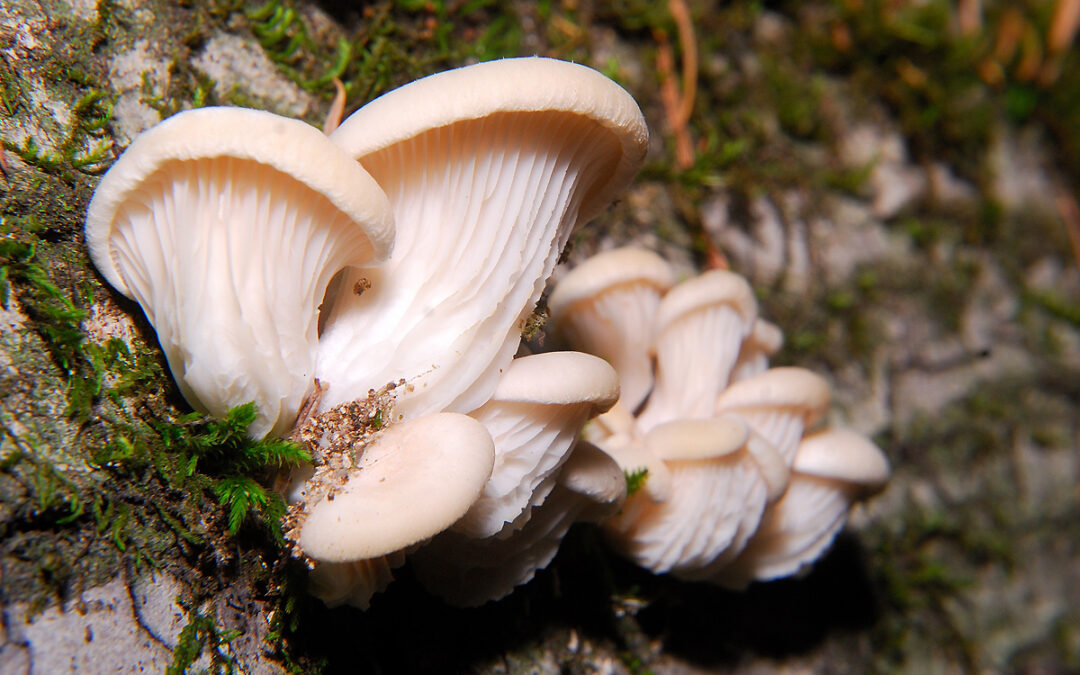

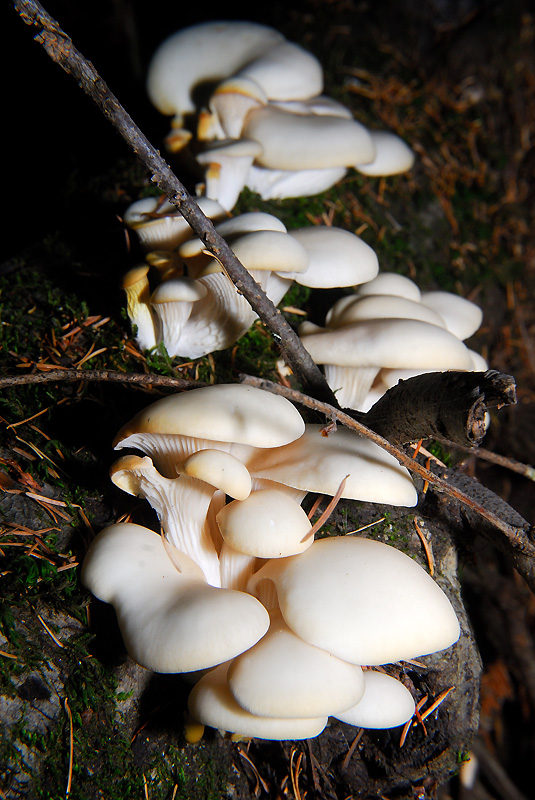
What beauties they are, so pale and luminous.
I agree, I think they’re one of the most beautiful fungi, especially up close!
Some day I hope to have the experience and confidence to ID and harvest edible mushrooms, but for now I’ll have to just enjoy their beauty. Great photos and information!
There are only three species of fungi that grow here that I’d even consider harvesting. The black trumpet chanterelles, morels, and these oyster mushrooms. Everything else is only hunted with a lens. It’s always much safer to buy mushrooms, as there are just too many lookalikes for some species. It’s not worth the risk in my opinion 😉
They look so much more beautiful in the wild than they do in the grocery store. Love the photos. 🙂
I love to see them growing wild too! 🙂
Your id skills are fantastic Clare. I love mushrooms but would never be brave enough to eat even the most easily identifiable mushroom out of my yard. These are such a pretty mushroom, any idea how they taste?
I’m not sure my ID skills are that great, as there are a LOT of LBM’s (little brown mushrooms), that I find impossible to ID, and there are many species of fungi that can’t be definitively identified without a microscope, but it is fun when I find one that I can ID 😉 I haven’t actually tasted these particular ones, as here I prefer to hunt for mushrooms with my camera, but my understanding is that the flavor can vary, from almost flavorless, to a stronger more anise-like flavor, depending on substrate, maturity, and moisture.
I don’t trust myself to ID and consumer fungi, but I do find them fascinating. These are beautiful and your photos show them at their best. What a joy to have found them as a “Christmas present”! I hope your holidays were wonderful, and I look forward to comparing plant/animal notes in the months ahead. Blessings to you and yours!
I agree, it really is much safer to keep the selection of culinary mushrooms to the confines of the grocery store or farmer’s market. There are only a very few species I would even consider harvesting, and that’s because they are so unique in physical appearance that they can’t be mistaken for another species. There are so few fungi here this winter, I’ve left these alone. I’m sure there are some woodland creatures who need them much more than I do in the middle of this drought! 😯
Your posts are always so fascinating and informative! I did not know anything about these mushrooms, but in retrospect I may have seen something similar here. I remember some with dented caps. If I see them again, I will look more closely!